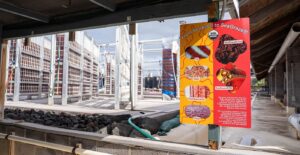Agriculture has been one of the main sectors implicated in the global debate around climate change. Although many stakeholders agree that changes need to be made to reduce food production’s impact on the environment, knowing where to start and which practices would have the most impact is a challenge.
McKinsey & Company sought to answer that question in a new report released today identifying 25 measures to reduce on-farm emissions that could abate 4.6 gigatons of carbon emissions by 2050. In Agriculture and Climate Change: Reducing emissions through improved farming practices, McKinsey notes that one-quarter of the world’s greenhouse gas emissions are attributable to agricultural production. As our population increases, increases in food production can lead to even more emissions if modifications aren’t adopted today, it warns.
There are a few themes among the 25 practices that the report recommends, including reducing fuel emissions, optimizing the use of existing resources, and improving soil health. The top 15 measures would contribute 85% of the report’s projected total possible reduction in emissions.
Practices related to rice production also make a number of appearances on the list. During the 2018/2019 crop year, roughly 486.62 million metric tons of rice were consumed worldwide, according to Statista. Unsurprisingly, a number of startups are already innovating specifically for improvements in rice production from seeing their paddy on their iPads to changing the nutritional composition of rice.
Livestock production also has ample room for improvement, according to the report, from optimizing feed, selecting for the most climate-friendly genetics, and improving animal health.
Although the report notes that other industries like the energy sector have identified many tech-driven solutions to reduce emissions, startups are hard at work to fill in the innovation gaps and to offer farmers new options. In the zero-emissions, on-farm machinery and equipment category, for example, WaterBit, American Robotics, DOT Farm Solutions, Raven Industries, Advanced Farm Technologies are all offering varying robotics-driven solutions.
Here are the 25 practices McKinsey identified. We included links to examples of startups already rising to the occasion for some practices:
- Zero-emissions on-farm machinery and equipment
- Variable-rate fertilization
- Reduced nitrogen application in China and India
- Dry direct seeding
- Low- or no-tillage
- Improved equipment maintenance
- Improved fuel efficiency of fishing vehicles
- Improved rice paddy water management
- Improved rice straw management
- Improved animal health monitoring and illness prevention
- Feed-grain processing for improved digestibility
- GHG-focused breeding and genetic selection
- Livestock nutrient use efficiency
- Optimal rice varietal selection
- Nitrogen-fixing rotations
- Improved fertilization of rice
- Nitrogen inhibitors on pasture
- Improved fertilization timing
- Controlled-release and stabilized fertilizers
- Animal feed additives
- Anaerobic manure digestion
- Technologies that increase livestock production efficiencies
- Animal feed mix optimization
- Conversation from flood to drip or sprinkler irrigation
- Specialty crop nutrition amendments
The report also recognizes that agriculture faces a unique set of hurdles to adopting these new practices compared to other sectors.
First, it suggests that fewer solutions exist in the agriculture field compared to other sectors; agriculture is less consolidated in comparison, with two billion people employed in food production around the world. This means that more individual buy-in is necessary in order to move the adoption needle.
Finally, fewer solutions exist because food production it complicated. It encompasses so many considerations and needs like biodiversity, nutrition, food security, farmers’ livelihoods, and the welfare of rural communities.
You can download the full report here.




